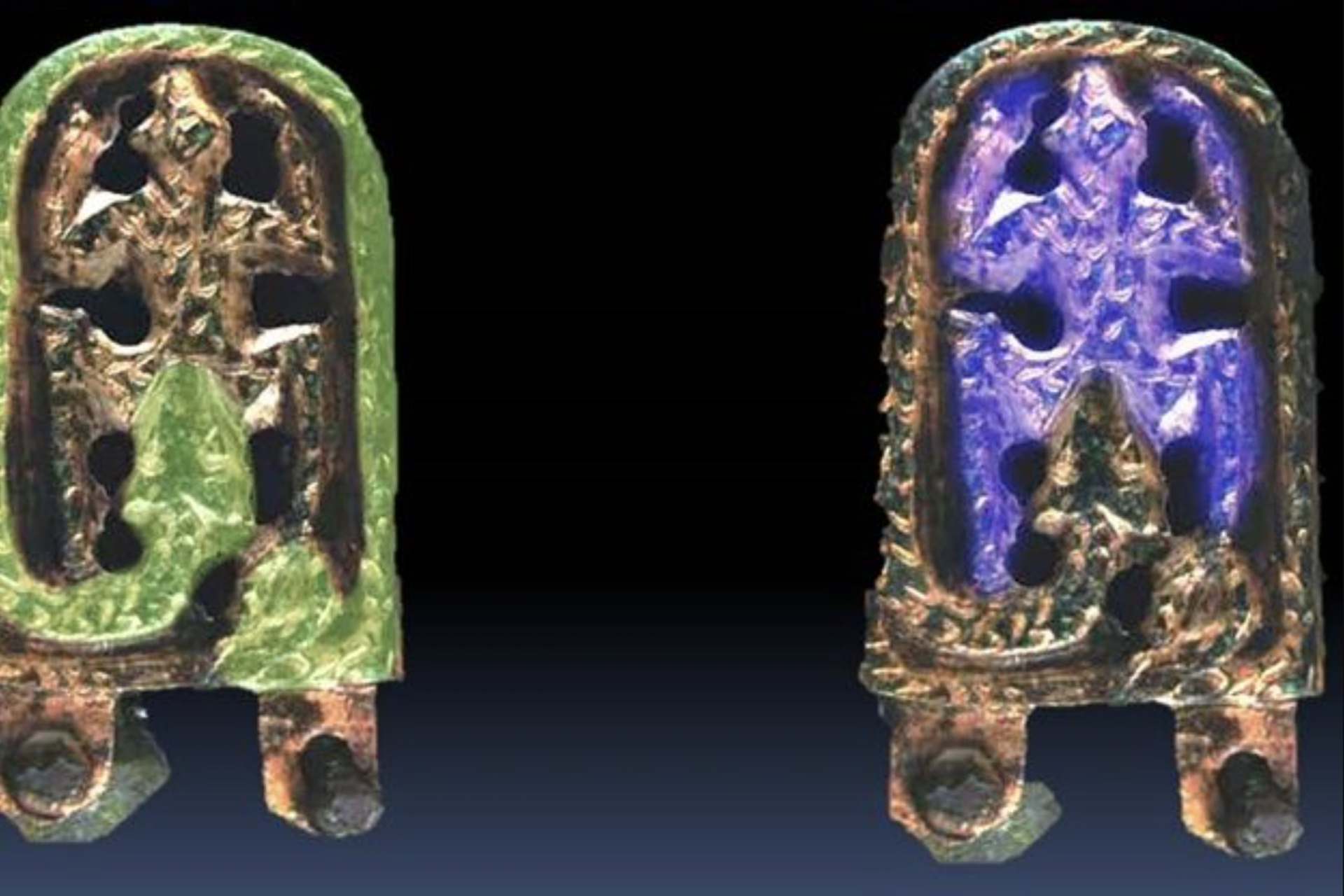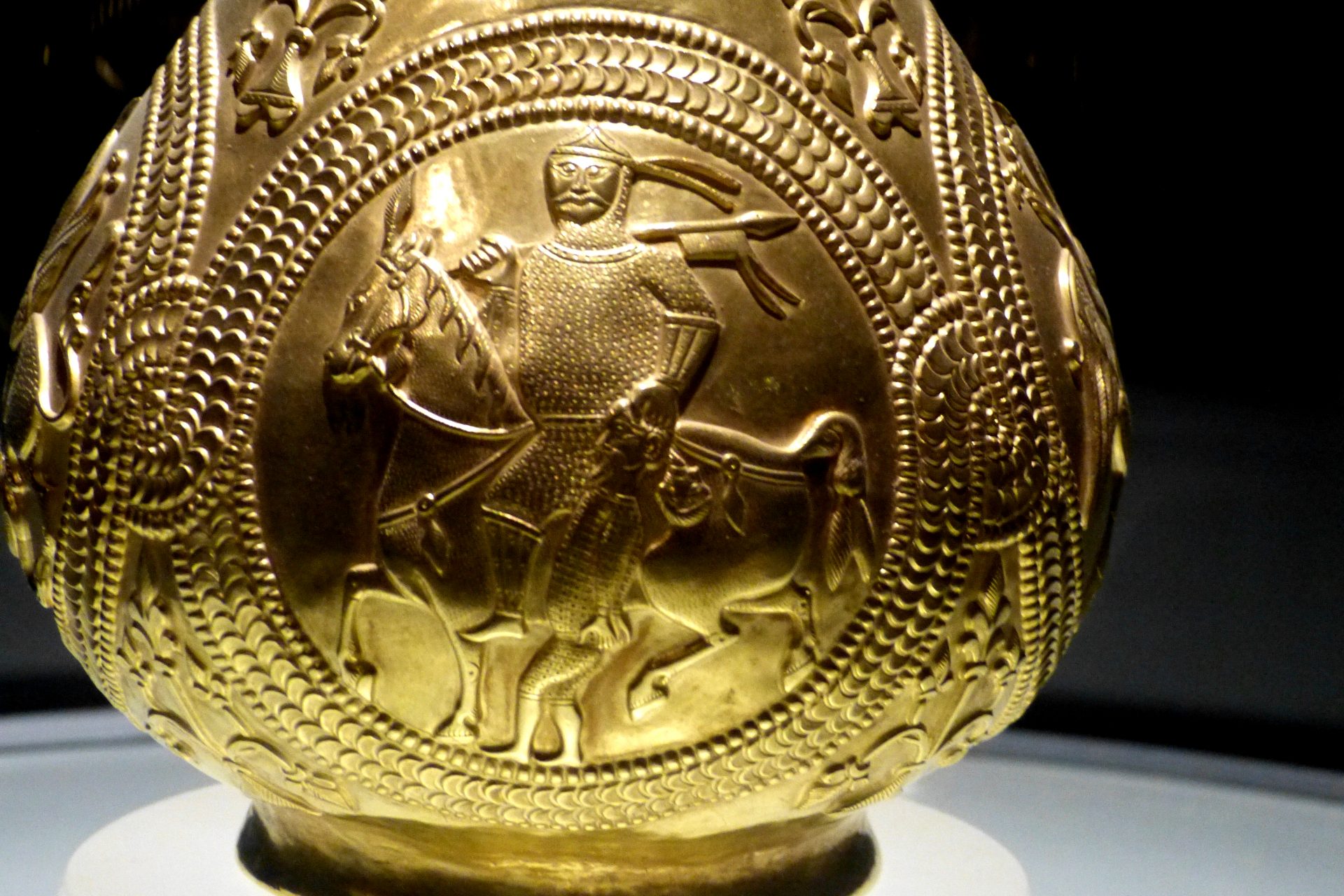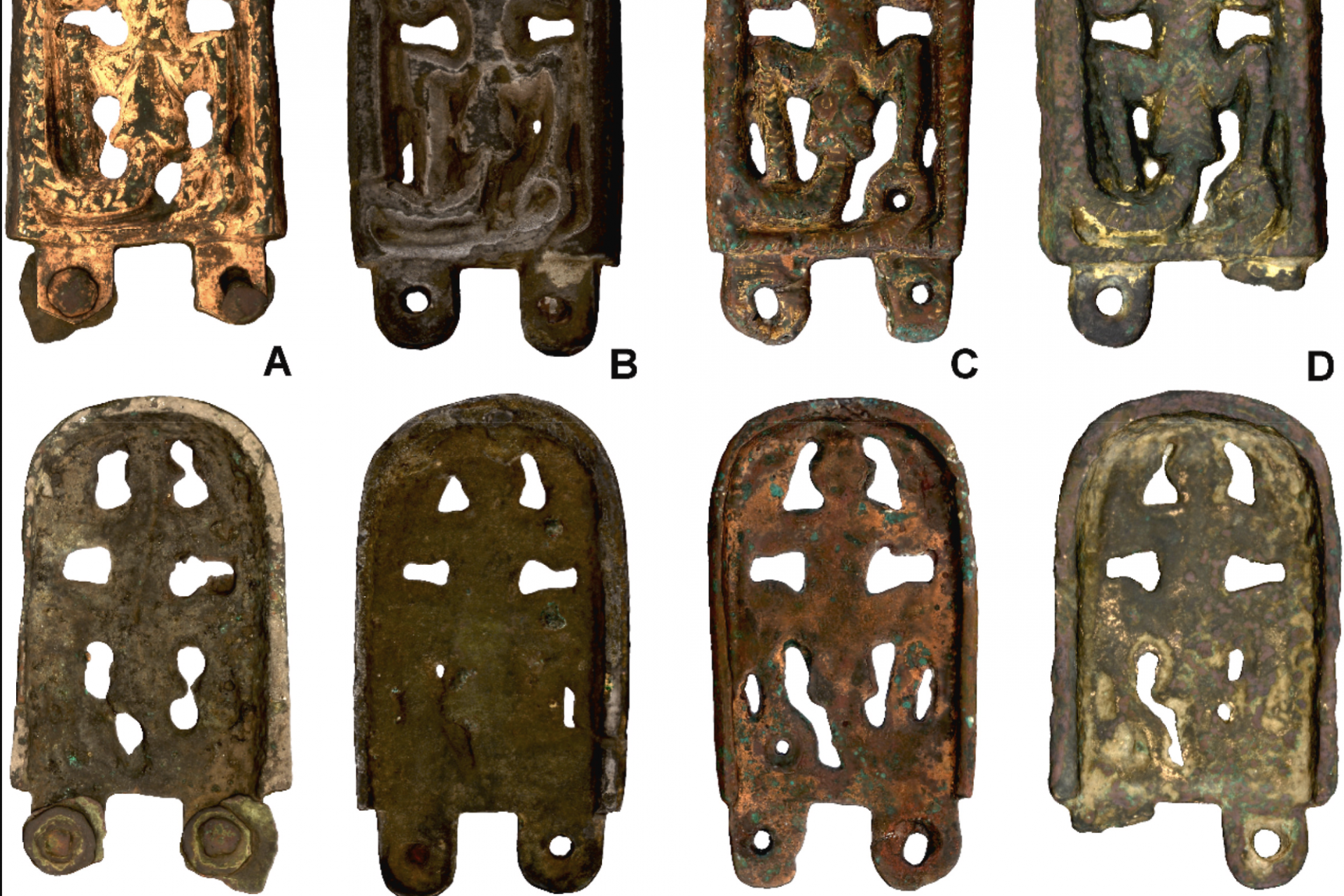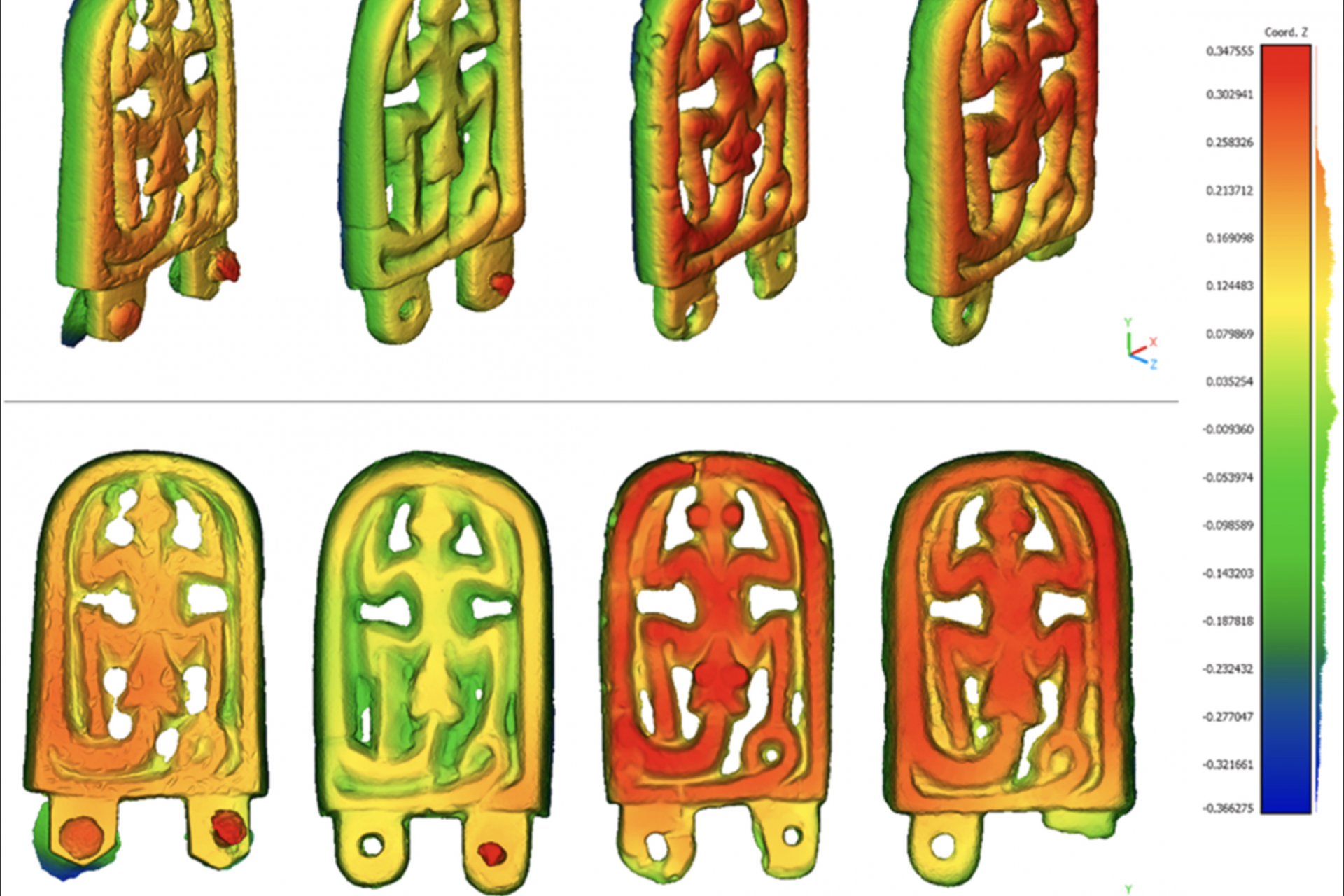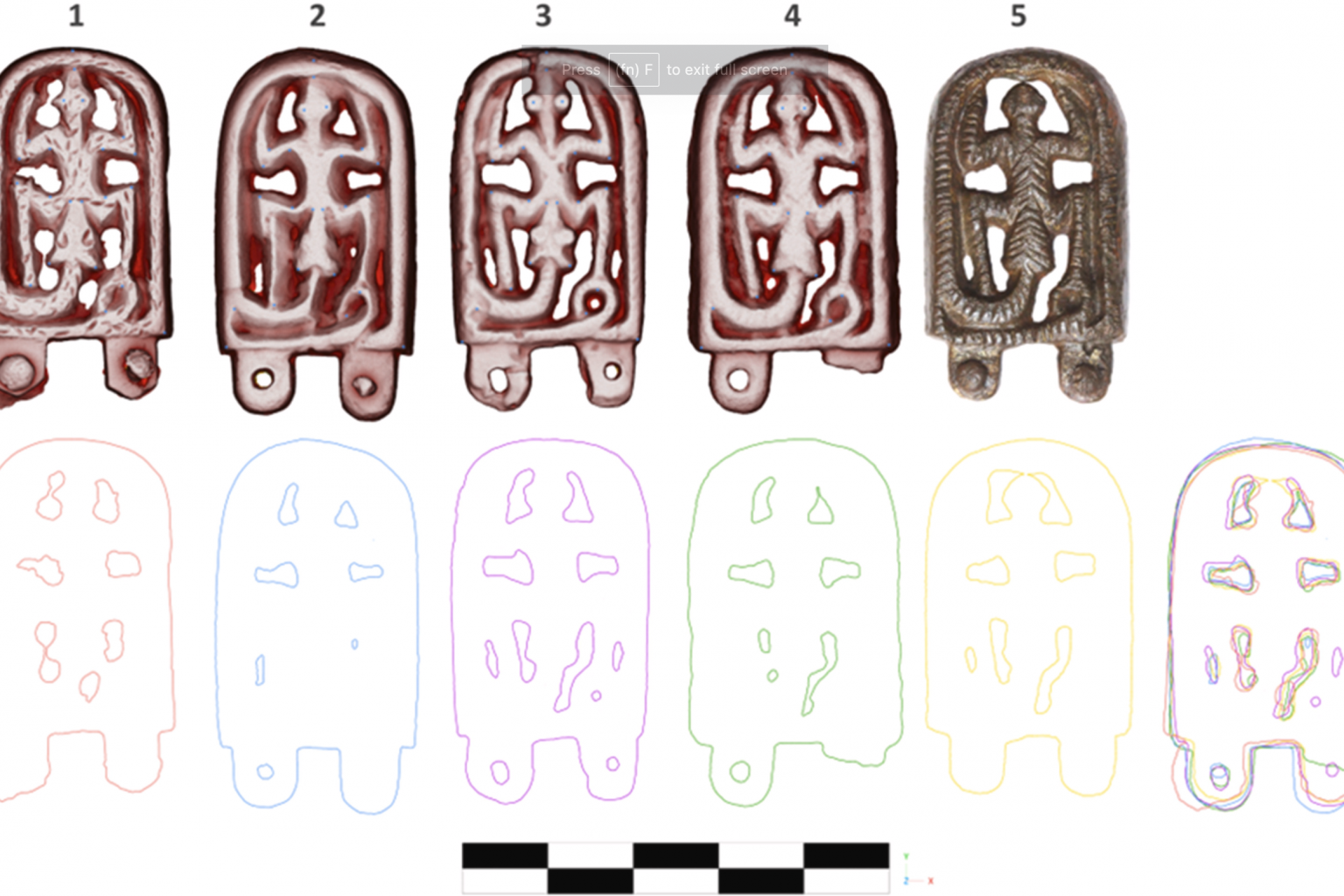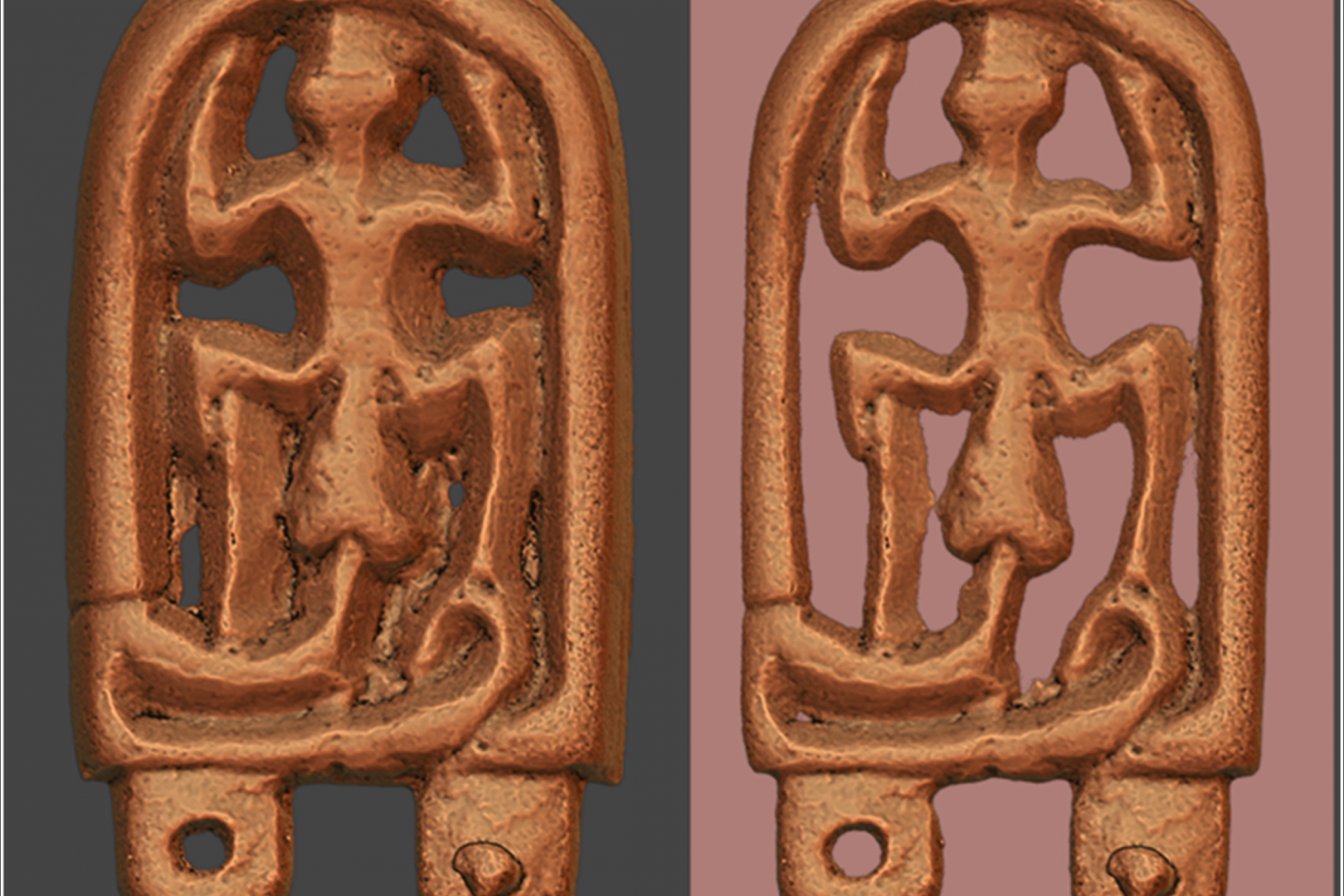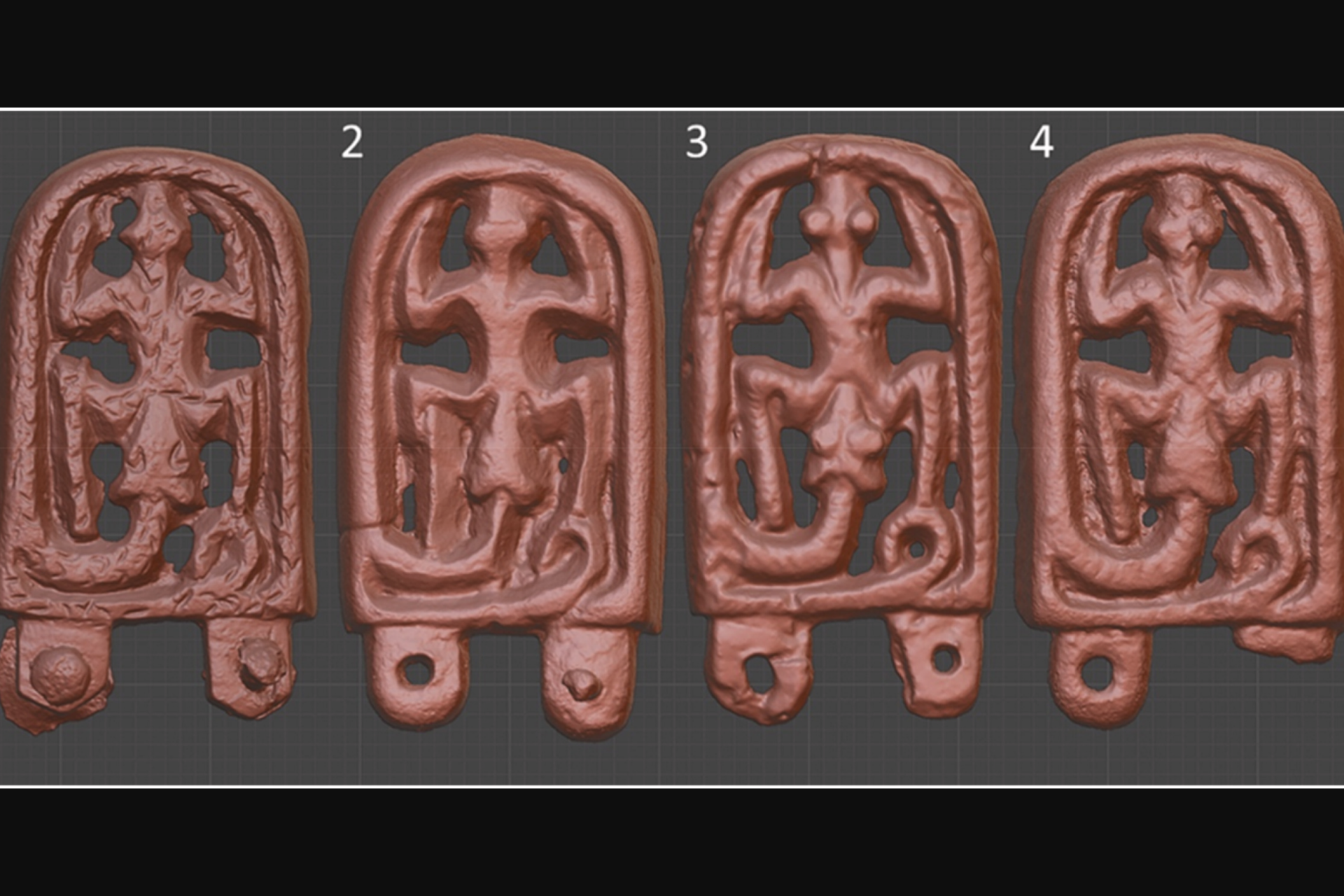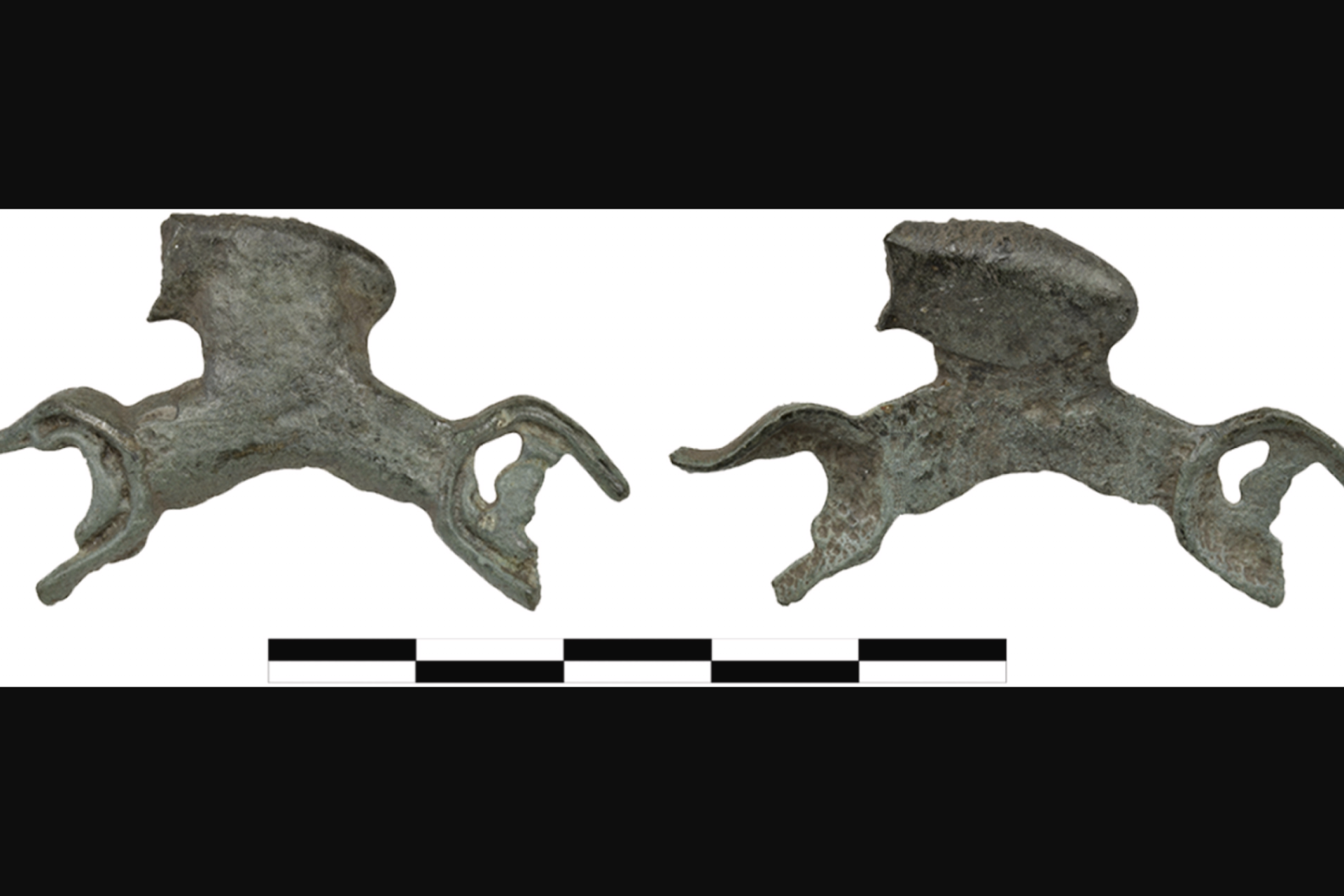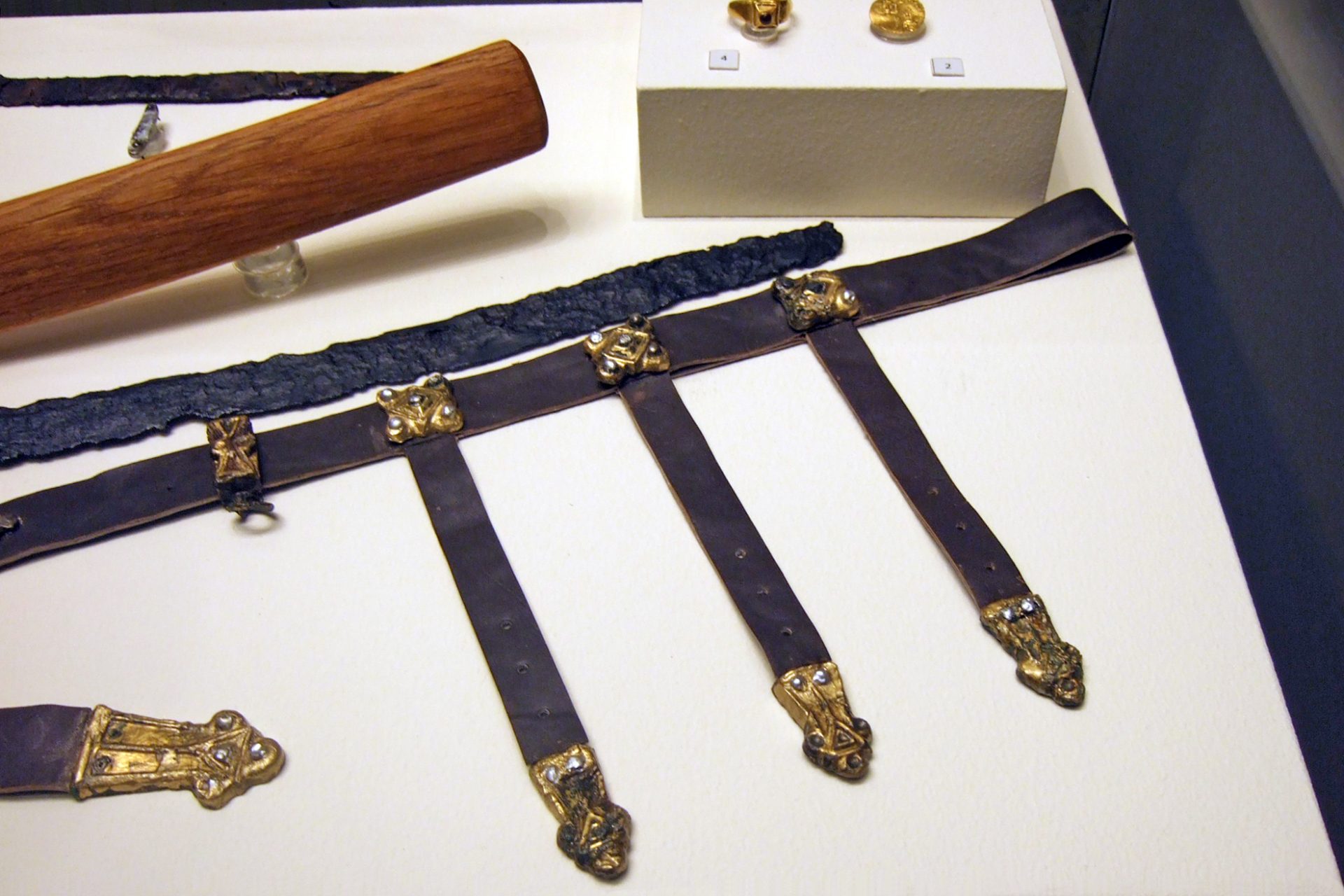Remember when archeologists uncovered evidence of a previously unknown medieval cult?
History is littered with mysteries and archeologists stumbled on an interesting one after they unearthed a mysterious gilded belt buckle that eventually led researchers to conclude the discovery belonged to the adherent of an unknown medieval cult.
The belt buckle was found in Lány u Břeclavi, Czechia by lead researcher Jiří Macháček of Masaryk University. Macháček wrote in a news release published by the university that he and his team originally believed the belt buckle they found was a distinctive archaeological artifact.
Photo Credit: Masaryk University Faculty of Arts
“When the belt with the motif of a snake devouring a frog was discovered with the help of metal detectors at the site near Břeclav in southern Moravia, we thought it was a rare find with a unique decoration,” Macháček explained.
Photo Credit: Masaryk University Faculty of Arts
However, the gilded belt buckle was anything but unique. Macháček later found out that similar belt buckles had been discovered in Germany, Hungary, and Bohemia, which he later realized meant the artifacts were all connected.
Photo Credit: Macháček et al, Journal of Archaeological Science 2024
“We later found that other nearly identical artifacts were also unearthed,” the university professor explained. “I realized that we were looking at a previously unknown pagan cult that linked different regions of central Europe.”
Photo Credit: Wiki Commons By Wolfgang Sauber
After making his realization, Macháček put together a team of international researchers to study the artifacts they had found in detail to see if they could find out anything more about the artifacts and where they came from.
Photo Credit: Masaryk University Faculty of Arts
After a thorough analysis of several gilded belt buckles, Macháček and his team revealed several interesting facts about the buckles, which they detailed in a report published by the Journal of Archeological Science in 2024.
Photo Credit: Macháček et al, Journal of Archaeological Science 2024
Scans of four belt buckles and isotope analysis by Macháček’s team showed many of the buckles were cast not only from the same wax but also that the copper used to make them came from the same source Vice reported.
Photo Credit: Macháček et al, Journal of Archaeological Science 2024
“Some of these belt ends come from the same workshop and/or are derived from a common model, even though they were found in very distant regions,” the authors of the study reported in their research paper.
Photo Credit: Macháček et al, Journal of Archaeological Science 2024
The belt buckles date to sometime between the 7th and 8th Century AD and belonged to a group of formerly nomadic peoples known as the Avars, who settled in the Carpathian Basin in what is now Hungary and spread their culture to their neighbors.
Photo Credit: Wiki Commons By Ramsey Muir Historical Atlas
The belt buckles depict what the researchers said appeared to be either a dragon or serpent devouring a frog, a motif that the Masaryk University reported was common in many of the cultural myths around the world.
Photo Credit: Macháček et al, Journal of Archaeological Science 2024
“The motif of a serpent or snake devouring its victim appears in Germanic, Avar, and Slavic mythology,” Macháček was quoted as explaining in the university press release. “It was a universally comprehensible and important ideogram.”
Photo Wiki Commons By Louis Moe - AU Library, Campus Emdrup, CC BY-SA 4.0
“Today, we can only speculate about its exact meaning, but in the early Middle Ages, it connected the diverse peoples living in Central Europe on a spiritual level,” Macháček continued. But that wasn’t the team's only discovery.
Photo Credit: Macháček et al, Journal of Archaeological Science 2024
The authors of the published study noted that belt buckles may have played an important role in medieval society among the elites who ruled those societies.
Photo Credit: Macháček et al, Journal of Archaeological Science 2024
The gilded belt buckles are believed to have been a way to communicate not only class between people according to Vice. However, the idea is only a theory but it would undo everything we thought we knew about Avar belt buckle use and its meaning in society.
Photo Credit: Wiki Commons By James Steakley - Own work, CC BY-SA 3.0
It is not known what the iconography represents, but Vice noted these belts may have been worn by members of a cult according to researchers. But again, their function in society can only be guessed at for now.
More for you
Top Stories





